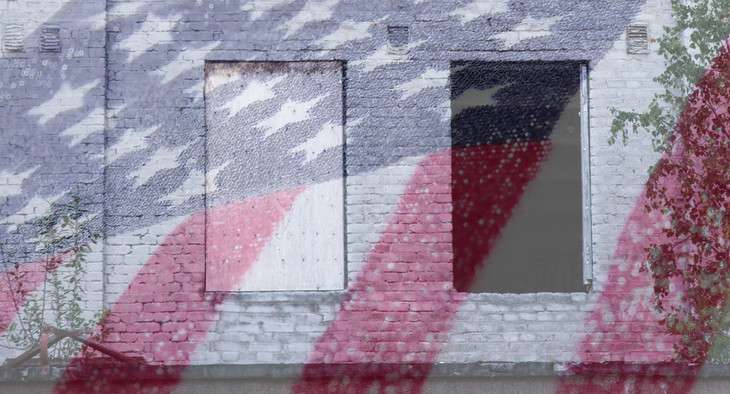Growing isolation of poor helps explain changes in concentrated poverty

Concentrated poverty—neighborhoods where 40 percent of the population or more lives below the federal poverty level—is back on the rise for all races in the United States, according to Penn State demographers.
Growing residential separation and isolation of the poor in American metropolitan areas, as well as overall increases in poverty since the early 2000s, explain most of the change in concentrated poverty, they added.
In the 1980s, concentrated poverty rose, but eased in the 1990s. However, the latest figures suggest that a rise in concentrated poverty has returned, according to John Iceland, professor of sociology and demography and research associate in the Population Research Institute.
"I personally was curious about this volatility—what explains it? Why did we see this increase in the 1980s and the decline in the 1990s and why has it been rebounding?" said Iceland. "As a social demographer, I'm particularly interested in the changing composition of people living in certain neighborhoods and what types of broad population processes help explain the general trend."
Although the country has seen shifts in poverty concentration before, there is a recent change in the locations of poverty concentrations, according to the researchers.
"The composition of people living in high-poverty neighborhoods and their locations has changed," said Iceland. "It used to be thought of as black, inner-city poverty, but now more Hispanics and a higher proportion of whites are living in high-poverty neighborhoods. They are less likely to be just in the inner core of cities, but oftentimes in inner suburbs."
Overall poverty is different from poverty concentration, although they could be related, said Iceland, who worked with Erik Hernandez, a graduate student in sociology and demography.
"We do look at how the changes of overall poverty affect the concentration of poverty, because those are two distinct concepts," Iceland said. "There could be a certain percentage of the population in a country that is poor, but what the concentration of poverty looks at is to what extent are they concentrated in relatively few neighborhoods."
In this study, poverty concentrations followed trends in overall poverty, according to the researchers, who report their findings in a recent issue of Social Science Research. The country's recent poor economic performance, such as the deep recession of 2006-2008, has affected individual poverty, neighborhood poverty and the percentage of all people and all poor people living in high poverty neighborhoods, the researchers said.
In the 2000s about 20.5 percent of poor blacks were living in a high-poverty neighborhood. Between 2010 and 2014, that figure was up to 23.1 percent. The percentage of poor non-Hispanic whites living in high-poverty neighborhoods in the 2000s was approximately 5.8 percent, which went up to 8.2 percent between 2010 and 2014. The total of poor Americans living in high-poverty neighborhoods went from 11.4 percent in the 2000s to 14.1 percent in the latest numbers.
According to the researchers, an increase in the concentration of poverty could affect government services, such as health, police and education. The trend could also have an impact on job opportunities.
"A lot of resources are tied to neighborhoods—the quality of schooling and the amount of a school's economic resources vary across neighborhoods, for example," said Iceland. "People have talked about how there's more crime and social disorganization in places with high poverty levels. And this all has consequences for quality of life."
The researchers used data from the U.S. Census Bureau that cover 1980 to 2000 and information from the 2000-2014 American Community Survey.
Journal information: Social Science Research
Provided by Pennsylvania State University

















